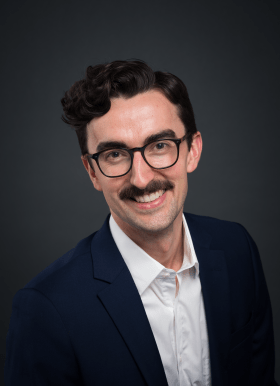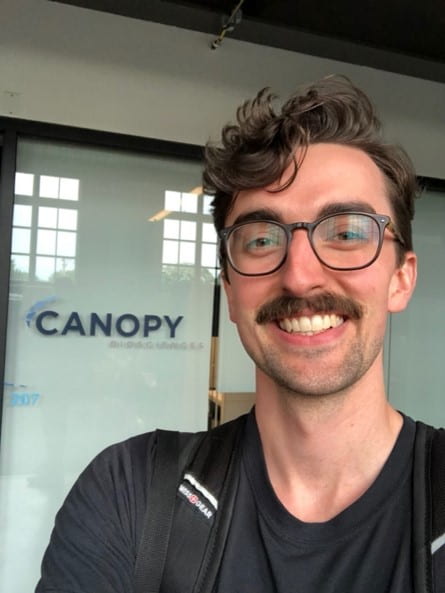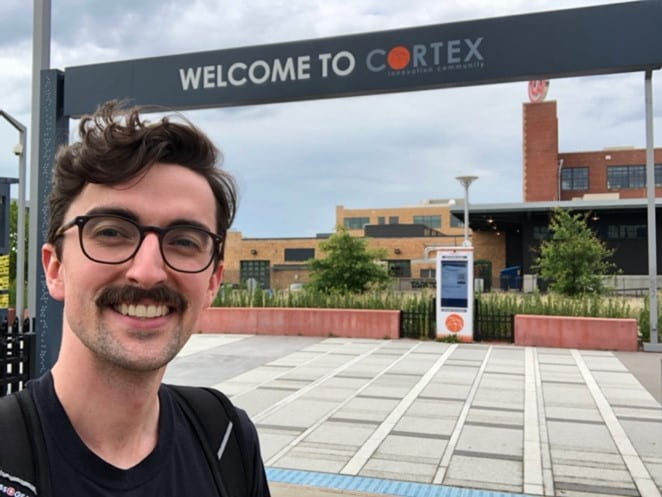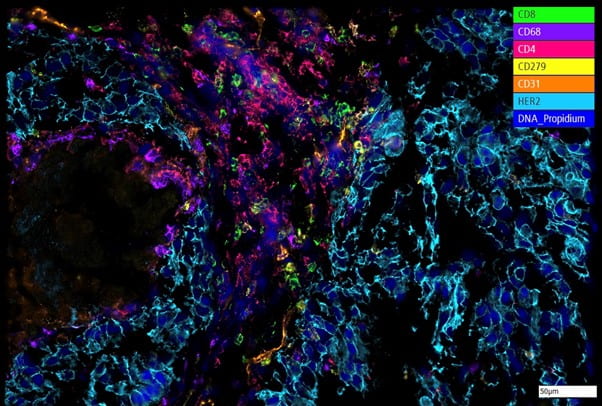
Alec Beeve
Entering the Start-Up Space through Spatial Biology
By: Alec Beeve (Y5 PhD Student in Biomedical Engineering)
Imagine you want to find a cure for cancer. Where do you begin? Some researchers might blend up tumors to look for molecular changes that cause healthy tissues to become cancerous. They may look at the proteins they produce or the instructions they use to make the proteins. Other researchers might thinly slice tumor samples and look at them under a microscope. They may look for changes in tissue structure or certain types of cells that may precede or promote tumor growth.
Both the experimental approaches above provide information that could inform cancer treatment. You could develop a therapy that targets a particular biomolecule or cell type, respectively. But in the first experiment, you lose the spatial context of biomolecular data (i.e. where did these biomolecular changes happen?); and in the second experiment, you lose the ability to probe deeply into molecular changes (i.e. how have these cells changed their activity?).

That’s where spatial biology comes in. Spatial biology is the study of cells and their molecular activity within their native 2D or 3D tissue environment. It seeks to connect molecular biology (i.e. blending up tissue samples to study biomolecules) and histology (i.e. thinly slicing tissue samples and studying its cellular constituents under a microscope).
Spatial biology methods have attracted increasing attention in the science world since 2020, when Nature named one approach “Method of the Year”. In the third year of my PhD program in Biomedical Engineering at WashU, I started hearing the buzz. By the time I was choosing at internship location for the Pivot 314 Fellowship, I had piloted a spatial biology experiment in my lab and was interested in learning more. Luckily, Saint Louis is home to a growing spatial biology start-up company: Canopy Biosciences

I applied to the Pivot 314 Fellowship because I plan to stay in Saint Louis and pursue a job in industry after graduation. I have a particular interest in working for biotech start-up companies because I see them as an important intermediate between academic ideas and translational science. Since I was entering the fourth year of my program, the Pivot 314 Fellowship seemed like a perfect opportunity to begin networking.
A 10-week part-time internship seems short but looking back it’s surprising how much was accomplished and how much I learned. I worked on projects at Canopy spanning research & development and product management. Although many of the details are confidential, I performed competitive analysis, assay kit design, market analysis, and technology review. One project included validation of a spatial biology assay kit for human breast cancer samples. In the image below, you can see various immune cell types highlighted in green, purple, and pink; blood vessels in orange, breast cancer tissue in light blue, nuclei in blue, and CD279, a protein target currently under investigation for the treatment of breast cancer.

I could not have completed these projects without the support of the Canopy team. I was supervised by two incredible product managers Thomas Campbell and Karen Kwarta and was trained in Canopy’s lab by expert scientists Charles Jackson and Xenia Meshik. The team treated me like a peer and a professional from the start. They entrusted me with real projects with realistic timelines and explained the actual impact that each deliverable would have on the business.
The internship was an invaluable component of the Pivot 314 Fellowship. I wish every student interested in exploring nonacademic career paths had the opportunity to make meaningful contributions to a company as an intern. Even a part-time, short-term experience can be productive with the right company and the right mentorship.